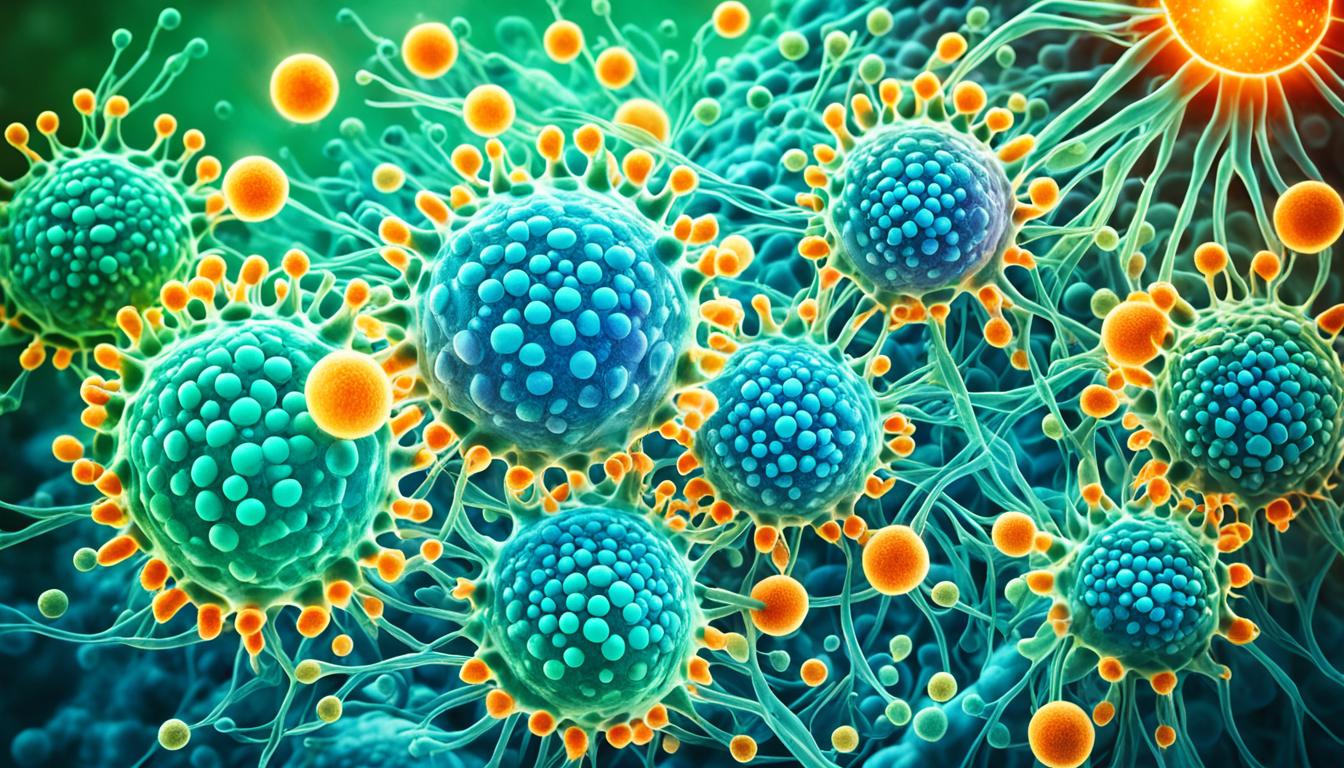Sunburn happens when the skin gets too much UV radiation from the sun. It makes the skin red, painful, and can even blister or itch. But, it’s more than just a discomfort. Sunburn shows the skin is being harmed in the long run and raises the chance of getting skin cancer.
Doctors look at your skin and hear what you’re feeling to check for sunburn. Signs include red, dry skin, a rash, burns, blisters, and itchiness. Getting sunburned many times raises the risk of skin cancers like basal cell carcinoma, squamous cell carcinoma, and melanoma.
For a mild sunburn, treatments can be simple like using cold cloths, moisturizers, and painkillers you can buy without a prescription. But in serious cases, you might hear about stem cell therapy as a new treatment. Stem cell therapy helps the skin heal quicker by replacing damaged skin cells. This can lower the chance of having worse problems from the sunburn.
Key Takeaways:
- Sunburn is a common issue coming from too much sun’s UV radiation.
- It makes the skin red, painful, and can also blister or itch.
- Getting sunburned a lot increases your skin cancer risk.
- Doctors find out if you have sunburn by checking your skin and listening to your symptoms.
- Treatments for sunburn include simple stuff for mild cases and stem cell therapy for serious ones.
Symptoms and Causes of Sunburn
Sunburn happens when your skin gets too much UV radiation from the sun. It can lead to many symptoms and harm your skin long-term. This raises your chance of getting skin cancer.
Symptoms of Sunburn
Sunburn can make your skin red and painful. You might see mild redness or have severe pain and blisters. Typical signs are:
- Red and dry skin: The skin looks red, feels tight, and gets dry.
- Rash: It can cause a rash that’s either itchy or painful.
- Burns: Bad sunburn can even look like burns.
- Blistering: Sometimes, it makes your skin blister.
- Itching: It can also make your skin really itchy.
Causes of Sunburn
Your skin burns when it gets too much UV light and not enough melanin protection. Many things can cause sunburn and up the risk of skin harm and cancer:
- Amount of time exposed to UV rays: Being in the sun a lot makes you more likely to burn.
- Time of day of sun exposure: The sun is strongest from 10 a.m. to 4 p.m. This is when sunburn is most common.
- Medication exposure: Some medicines, like antibiotics, can make your skin more sensitive to sun.
- Skin phototype: People with light skin, freckles, and light eyes are more prone to sunburn.
- Underlying skin conditions: Certain skin problems, like eczema, can make your skin react more to the sun.
Getting sunburnt a lot raises your risk of skin cancer, including more serious types like melanoma.
Up next, we will look at how to prevent and treat sunburn. This is to help you keep your skin safe and healthy.
Prevention and Treatment of Sunburn
To prevent sunburn, limit direct exposure by wearing protective gear. This includes hats and clothing that cover your arms and legs. Sunscreen is also essential to protect your skin from the sun’s damaging rays. Always choose a broad-spectrum sunscreen that blocks both UVA and UVB rays. A sun protection factor (SPF) of 15 or higher gives the best protection.
Using sunscreen correctly is crucial. You should apply about one ounce of sunscreen to cover your whole body. Make sure you apply it to all areas that are not covered by clothing. Put on sunscreen at least 15 minutes before you go outside. Reapply every two hours, and after you swim or sweat.
If you get a sunburn, you can treat it at home. Taking a cool shower can help cool down your skin. Then, using moisturizers or creams with cortisone can relieve pain and itching. You can also take over-the-counter pain medications to help with discomfort. But, if your sunburn is bad or if you have serious symptoms, see a doctor. They might prescribe medicines to help you heal.
Avoid direct sunlight and things that cause a reaction if you’re prone to sunburn. This, along with proper treatment, can lower your risk of sunburn and its complications.

